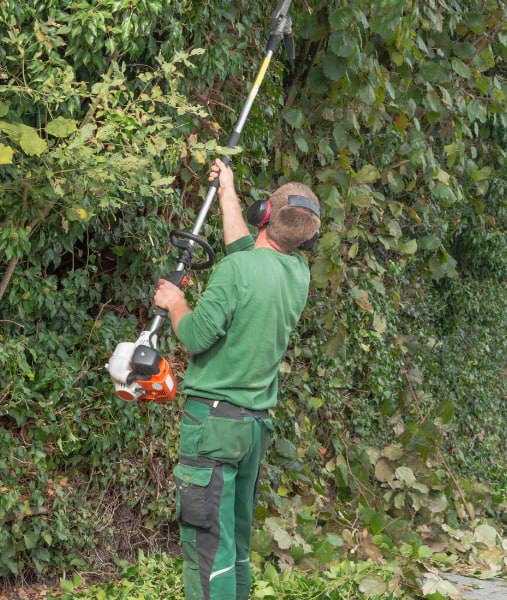
Introduction: Fruit trees are valuable to any garden, providing delicious, homegrown produce. However, proper pruning is essential to ensure these trees thrive and yield bountiful harvests. In this blog post, Uckfield Tree Surgeons will guide you through the art and science of pruning fruit trees for maximum yield and health.
The Benefits of Pruning Fruit Trees
- Improved Airflow: Pruning opens up the canopy, allowing better airflow. This reduces the risk of fungal diseases and promotes healthier fruit development.
- Sunlight Penetration: Proper pruning ensures that sunlight reaches all parts of the tree, stimulating fruit production and ripening.
- Size Control: Pruning helps maintain the tree’s size and shape, making it more manageable and accessible for harvesting.
- Thinning: Removing excess branches and fruit allows the tree to allocate energy to fewer fruits, resulting in larger and higher-quality harvests.
- Disease Prevention: Regular pruning allows for the removal of diseased or dead branches, reducing the risk of infection and promoting tree health.
- Encouraging New Growth: Pruning stimulates the growth of new branches and spurs, which are essential for future fruit production.
Pruning Basics for Fruit Trees
- Timing:
- Prune during the dormant season, typically in late winter or early spring, before new growth begins. This minimises stress on the tree and reduces the risk of disease transmission.
- Tools:
- Use sharp, clean pruning shears or loppers to make precise cuts. A pruning saw may be necessary for larger branches.
- Sanitation:
- Disinfect your tools between cuts when dealing with diseased branches to prevent the spread of pathogens.
- The Three Ds:
- Focus on removing branches that are Dead, Damaged, or Diseased first. These are a priority for the health of the tree.
- Size and Shape:
- Maintain a central leader (main vertical trunk) for most fruit tree types. Remove competing leaders and aim for an open vase or modified central leader shape.
- Thinning:
- Thin out crowded branches to allow light and air circulation. Aim for 6-8 inches between branches to reduce competition.
- Heading Cuts:
- Make heading cuts by cutting just above a bud or lateral branch to encourage new growth. This helps control tree height and stimulates fruiting spurs.
- Cleaning Up:
- Remove all pruned material around the tree to prevent disease and pests from using it as a habitat.
- Regular Maintenance:
- Prune fruit trees annually to maintain shape and productivity.
Conclusion: Pruning fruit trees is both a science and an art that requires careful consideration of the tree’s health and growth habits. With the right techniques and timing, you can maximise the yield and health of your fruit trees. If you’re uncertain how to prune your fruit trees or have large or complex trees requiring professional attention, Uckfield Tree Surgeons is here to assist you. With proper care and pruning, your fruit trees will reward you with delicious and abundant harvests for years.
Call us on: 01825 705493
Click here to find out more about Uckfield Tree Surgeons
Click here to complete our contact form and see how we can help with your tree’s needs.